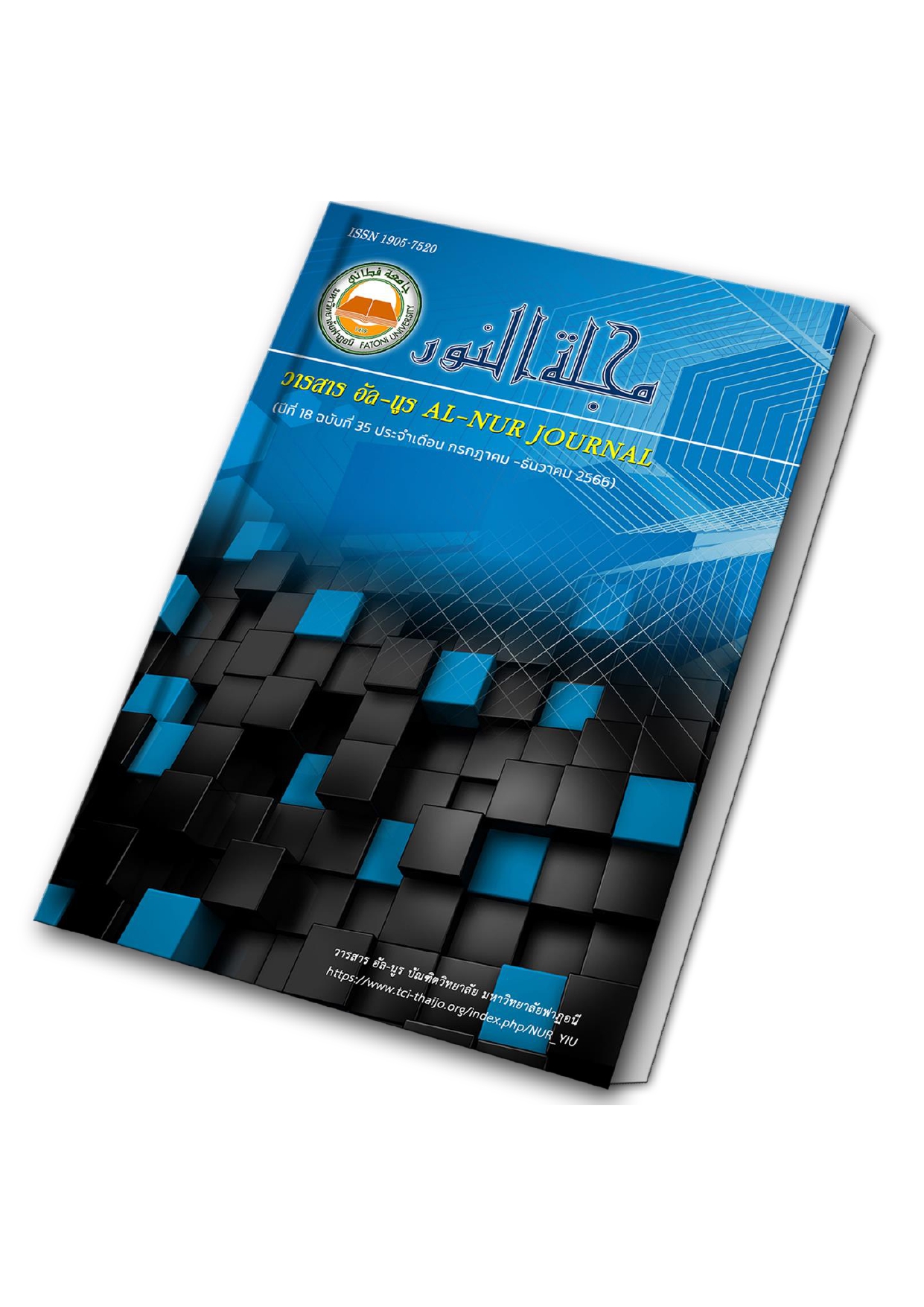Application of competencies model for expatriates in the Eastern Economic Corridor zone
Keywords:
สมรรถนะAbstract
The purpose of this research was to study the application of competencies model for expatriates in the Eastern Economic Corridor Zone. This research used a qualitative research methodology. By using in-depth interviews and focus group, use semi-structured interviews with key informants. Which selected a purposive sample from the executives of the human resources department expatriates of international business in the Eastern Economic Corridor Zone and academics in human resources total of 30 peoples. The research results showed that defining competencies for expatriates can be summarized into 2 large competencies, consisting of 1) management competencies, including knowledge and skills, and 2) personal competencies, including attitudes, values, and opinions about one's own image. personal personality and intrinsic motivation or drive It is suggested that international business should be formulated as a policy or strategy for developing competency in a clear, systematic manner and lead to concrete implementation. A system of knowledge management mechanisms for competency development should be built. The competency development model for expatriates should be used as a conceptual framework and a competency development curriculum should be developed, including management competencies. and personal performance for expatriates stationed in Thailand to be ready and able to adapt to work in Thailand faster. It was also discovered that this competency model can be applied to expatriates in a business-appropriate context. This will lead to driving the business internationally.
References
กรมพัฒนาธุรกิจการค้า. (2564). ข้อมูลธุรกิจในพื้นที่การพัฒนาระเบียงเศรษฐกิจพิเศษภาคตะวันออก. กองข้อมูลธุรกิจ, กรมพัฒนาธุรกิจการค้า.
จิรประภา อัครบวร. (2549). สร้างคนสร้างผลงาน. กรุงเทพฯ: ก. พลพิมพ์.
ฉัตรณรงค์ศักดิ์ สุธรรมดี. (2560). การประยุกต์ใช้สมรรถนะเพื่อพัฒนาทรัพยากรมนุษย์. วารสาร มหาวิทยาลัยราชภัฏร้อยเอ็ด, 11 (1), 262-269.
ชลธิศ ดาราวงษ์. (2556). การบริหารพนักงานข้ามชาติในยุคการค้าเสรีอาเซียน. วารสารบริหารธุรกิจ, 36(138), 29-33.
ทินกร บัวชู. (2564). รูปแบบการพัฒนาสมรรถนะเพื่อเพิ่มขีดความสามารถทางการแข่งขันในศตวรรษ ที่ 21 ของอาจารย์พยาบาลสังกัดมหาวิทยาลัยราชภัฏ. ปริญญานิพนธ์หลักสูตรการศึกษาดุษฎีบัณฑิต สาขาวิชาการบริหารการศึกษา คณะศึกษาศาสตร์ มหาวิทยาลัยศรีนครินทรวิโรฒ.
นนทวัฒน์ สุขผล. (2565). กลยุทธ์การพัฒนาสมรรถนะทรัพยากรบุคคลรองรับการเป็นธนาคารเพื่อสังคม. วารสารวิจัยมหาวิทยาลัยเวสเทิร์น มนุษยศาสตร์และสังคมศาสตร์, 8(2), 77-90.
พัฒนพงษ์ พรหมสาขา ณ สกลนคร. (2564). การพัฒนาสมรรถนะของบุคลากรฝ่ายบริการกลางของธนาคารกรุงศรีอยุธยาจํากัด (มหาชน) ในเขตกรุงเทพมหานคร. วารสารสังคมศาสตร์และ มานุษยวิทยาเชิงพุทธ, 6(2), 130-142.
รัชฎาทิพย์ อุปถัมภ์ประชา. (2561). สมรรถนะของนักทรัพยากรมนุษย์มืออาชีพ. WMS Journal of Management Walailak University, 8(2), 122-135.
วรรณดี สุทธินรากร. (2556). การวิจัยเชิงคุณภาพ : การวิจัยในกระบวนทัศน์ทางเลือก. กรุงเทพฯ: สยามปริทัศน์.
วรรณภา ลือกิตินันท์. (2558). การประยุกต์ใช้แนวคิดสมรรถนะในการจัดการทรัพยากรมนุษย์: กรณีศึกษา บริษัทผลิตยางรถยนต์ชั้นนำระดับโลกแห่งหนึ่ง. วารสารวิทยาการจัดการ, 32(1), 19-36.
สำนักงานสภาพัฒนาการเศรษฐกิจและสังคมแห่งชาติ. (2566). แผนพัฒนาเศรษฐกิจและสังคม แห่งชาติ ฉบับที่ 13 (พ.ศ.2566-2570). สืบค้นเมื่อ 5 มกราคม 2566, จาก https://shorturl.asia/lTu2J
สิริวดี ชูเชิด. (2565). การพัฒนาสมรรถนะบุคลากรในการปฏิบัติงานให้มีประสิทธิภาพ. วารสารวไลยอลงกรณ์ปริทัศน์ (มนุษยศาสตร์และสังคมศาสตร์), 12(1), 223-238.
อรชา รักดี และคณะ. (2564). สมรรถนะของแรงงานข้ามชาติชาวไทยที่เป็นที่ต้องการในภาคธุรกิจ Shared Services and Outsourceing ในมาเลเซีย. Journal of Social Science and Humanities Research in Asia, 27(2), 169-193.
เอกพงษ์ หริ่มเจริญ. (2565). สมรรถนะของผู้ประกอบการภาคธุรกิจอุตสาหกรรมแปรรูปการเกษตรของไทย. วารสารมนุษยศาสตร์และสังคมศาสตร์ มหาวิทยาลัยราชพฤกษ์, 8(1), 33-49.
Heslina H. & Andi Syahruni. (2021). The Influence of Information Technology, Human Resources Competency and Employee Engagement on Performance of Employees. Golden Ratio of Human Resource Management, 1(1), 1-12.
Laura J. & Simone K. (2021). Traditional and new ways in competence management: Application of HR analytics in competence management. Gr Interakt Org, 52(1), 7-24.
Maharatsagun, P. (2007). kanchatkan sapphayako̜n manut mung suanakhot [Human Resource Management: Towards the Future]. Bangkok: Pimtawan publishing.
Mangaleswaran, T. (2015). Human Resource Competencies for Managing Challenges. Information and Knowledge Management, 5(9), 109-114.
McClelland, David C. (1999). (Online). Identifying Competencies with Behavioral-event interviews. Psychological Science, 9(5). [Retrieved December 11, 2005]. From www.eiconsortium.org/research/business_case_for_ei.htm.
Punnitamai, W. (2010). Roles, competencies, and professionalism of Thai HR practitioners: Silent crises amid stubborn traditionalism. NIDA Development Journal, 50(3), 43-74.
Sharma P. (2017). Competency Development at the Workplace: a conceptual framework. JK International Journal of Management and Social Science, 1(1), 39-44.
Susanto R. & Agustina N. (2020). Analysis of the Application of the Pedagogical Competency Model Case study of Public and Private Primary Schools in West Jakarta Municipality, DKI Jakarta Province). Elementary Education Online, 2020; 19(3), 167-182.
Yashonidhi S. & Souvik G. (2021). Smart HR Competencies and Their Applications in Industry 4.0. A Fusion of Artificial Intelligence and Internet of Things for Emerging Cyber Systems, 293-315.
Downloads
Published
Issue
Section
License
Copyright (c) 2024 Preedaporn Araksomboon; Nuttapol Buapliansee

This work is licensed under a Creative Commons Attribution-NonCommercial-NoDerivatives 4.0 International License.
Proposed Creative Commons Copyright Notices


